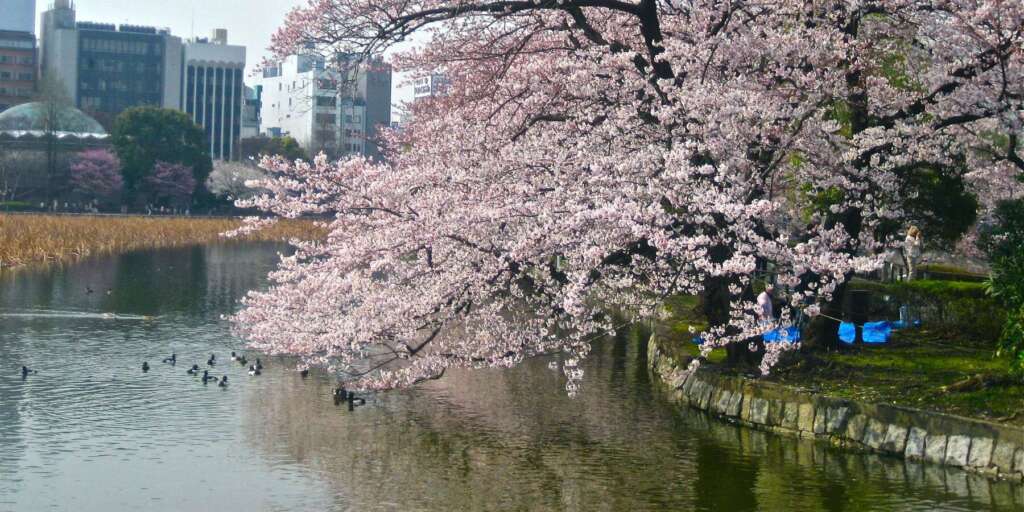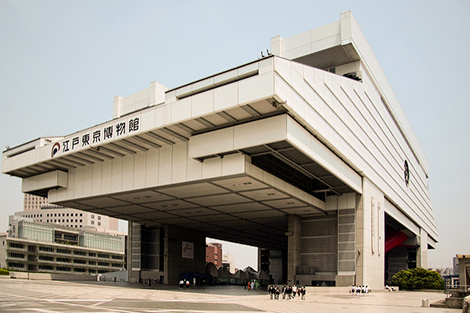As a seasoned traveler, Tokyo never fails to intrigue me with its dynamic fusion of tradition and innovation. The city’s allure extends far beyond the iconic landmarks and bustling streets, offering a tapestry of experiences waiting to be discovered. From the serene temples nestled amidst skyscrapers to the culinary wonders hidden in charming alleyways, Tokyo beckons exploration beyond the surface. The depth of its culture and the secrets it holds are proof of its enigmatic charm, inviting you to uncover the layers of this enchanting metropolis.

Key Takeaways
- Tokyo blends tradition with innovation, offering diverse attractions for all interests.
- Efficient public transportation like IC cards and regional passes make navigating seamless.
- Enjoy a vibrant culinary scene with Michelin-starred restaurants and street food markets.
- Explore diverse neighborhoods like Shibuya and Shinjuku, each with a unique charm.
- Experience Tokyo’s rich history through ancient temples, modern skyscrapers, and cultural events.
Overview
Immerse yourself in the dynamic fusion of tradition and innovation that defines Tokyo, a city pulsating with vibrant energy and endless possibilities. Tokyo, a traveler’s paradise, offers a plethora of attractions catering to all interests. From the serene beauty of historic temples and gardens to the awe-inspiring modernity of skyscrapers and bustling entertainment districts, there’s something for everyone in this diverse city.
Exploring Tokyo’s neighborhoods is a must for any visitor. Each district, such as the trendy Shibuya, bustling Shinjuku, and culturally rich Asakusa, has its own unique charm and offerings waiting to be discovered. Food enthusiasts will delight in Tokyo’s culinary scene, boasting Michelin-starred restaurants, lively street food markets, and a vast array of dining experiences to savor.

Navigating Tokyo is a breeze thanks to its efficient public transportation system. Whether you’re hopping on the iconic trains or buses, getting around the city to explore its many sights and experiences is seamless. For a panoramic view of the city, head to one of Tokyo’s observation decks for a breathtaking cityscape.
Art lovers can indulge in Tokyo’s world-class art museums, showcasing both traditional and contemporary works. If you’re looking to venture beyond the city limits, Tokyo’s convenient location allows for exciting day trips to nearby cultural and natural attractions. And of course, no trip to Tokyo is complete without indulging in some retail therapy in the city’s eclectic shopping districts.

History
Originally known as Edo, Tokyo became the capital of Japan in 1868 during the Meiji Restoration, marking a pivotal moment in its historical evolution. The city’s history can be traced back to the early 12th century when the first shogun established his government in Edo. Tokyo endured significant destruction during World War II, but the post-war period saw rapid reconstruction and modernization, transforming it into the vibrant metropolis it is today. The name ‘Tokyo’ itself meaning ‘Eastern Capital’ reflects its strategic location on Japan’s eastern coast.
Tokyo’s history is a fascinating blend of traditional Japanese culture and cutting-edge technological advancements. Walking through the city, one can witness ancient temples and shrines standing alongside modern skyscrapers and bustling streets. The Tokyo Metropolitan area showcases a harmonious coexistence of the old and the new, encapsulating the essence of Japan’s rich heritage and its continuous drive for innovation.

The Meiji Restoration played a significant role in shaping Tokyo’s trajectory, propelling it towards becoming a beacon of progress and development. This historical shift laid the foundation for Tokyo to emerge as a global powerhouse, balancing its deep-rooted traditions with a forward-thinking approach to modernity. The city’s story is a testimony to resilience, adaptability, and the enduring spirit that defines the heart of Tokyo.

Geography
Nestled on the eastern coast of Honshu, Japan’s main island, Tokyo boasts a dynamic geographical landscape that encompasses a blend of urban districts, scenic rivers, and mountainous terrains. The city is divided into 23 special wards, each functioning like its own city, creating a diverse and vibrant urban environment. Tokyo sprawls over approximately 2,194 square kilometers, making it one of the largest metropolitan areas globally, offering a plethora of experiences for travelers.
Rivers like the Sumida and the Tama flow through the city, adding a touch of serenity and natural beauty to the bustling metropolis. In the western part of Tokyo, mountainous regions provide a stark contrast to the urban landscape, offering opportunities for outdoor adventures and stunning panoramic views of the city.
Tokyo Bay, an inlet of the Pacific Ocean, graces the eastern part of the city and plays a pivotal role in Tokyo’s maritime activities. The bay not only enhances the city’s beauty but also serves as a hub for various water-based recreational activities and transportation.
The geography of Tokyo is as diverse as the city itself, offering a unique blend of urban conveniences, natural wonders, and maritime charm, making it a captivating destination for travelers seeking a multifaceted experience.

Population
How does Tokyo’s population size compare to other major cities around the world? Tokyo stands out as the most populous city in Japan, home to over 14 million people. The vibrant metropolis of Tokyo, part of the Greater Tokyo Area, is renowned for its densely populated regions, creating a bustling atmosphere unlike anywhere else. The diversity within Tokyo’s population is striking, with a blend of Japanese locals and a thriving expatriate community adding to the city’s unique charm. As I navigated through the vibrant streets of Tokyo, I was amazed by the mix of cultures and languages that filled the air, showcasing the city’s rich tapestry of diversity.
One can’t ignore the high population density in Tokyo, which contributes to the lively energy that pulses through the city. From the efficient public transportation system to the countless opportunities that attract people from all corners of Japan and the globe, Tokyo is a melting pot of experiences waiting to be explored. The city’s growth shows no signs of slowing down, with individuals flocking to Tokyo in pursuit of diverse career prospects and cultural immersion. As I immersed myself in Tokyo’s dynamic atmosphere, I couldn’t help but appreciate the endless possibilities that awaited me in this vibrant urban landscape.
Climate
With a humid subtropical climate featuring four distinct seasons, Tokyo offers a diverse range of weather experiences throughout the year. Summer in Tokyo can be hot and humid, with temperatures often exceeding 30°C (86°F) and high humidity levels making it quite uncomfortable. The rainy season, known as tsuyu, typically occurs in June and July, bringing heavy rainfall and occasional thunderstorms to Tokyo, creating a unique atmosphere in the city. Winters in Tokyo are generally mild, with temperatures averaging around 5-10°C (41-50°F), but occasionally dropping below freezing, giving visitors a chance to experience a different side of the city.
Spring in Tokyo is a magical time when the cherry blossoms bloom, attracting visitors from around the world to witness the stunning pink and white flowers. The peak bloom usually occurs in late March to early April, and this period is celebrated with hanami, the tradition of flower viewing. It’s a wonderful time to explore the city’s parks and gardens, such as Shinjuku Gyoen and Ueno Park, where the cherry blossoms create a picturesque setting for relaxation and enjoyment. Tokyo’s climate truly enhances the experience of each season, offering something special for every traveler.

Economy
Tokyo’s bustling metropolis thrives as a major economic powerhouse in Japan, driving innovation and growth across diverse industries. As you plan your next trip to this vibrant city, you’ll be immersed in a dynamic economy that plays a pivotal role in Japan’s GDP. From finance to technology, entertainment, and tourism, Tokyo’s economic landscape is rich and varied, offering a myriad of opportunities for both locals and international businesses.
When looking for the best places to stay, consider boutique hotels in central districts like Marunouchi, Shinjuku, or Shibuya, where you’ll be surrounded by the pulsating heart of Tokyo’s economic activities. These areas aren’t only convenient for business travelers but also offer easy access to top shopping malls and observation decks to catch breathtaking views of the cityscape.
While exploring Tokyo, you’ll notice the seamless connectivity provided by the Japan Rail system, essential for commuting between meetings or venturing out to iconic sights like Mount Fuji. Make use of the city’s numerous convenience stores for quick snacks on the go, allowing you to fuel up before your next business endeavor or cherry blossom viewing expedition. Tokyo’s economic vigor is palpable, creating a dynamic backdrop for your travel experiences.
Ethnicity
Amidst the vibrant streets of Tokyo, a melting pot of diverse ethnicities creates a colorful tapestry of cultures and traditions. The city isn’t only a bustling metropolis but also a hub of international influences, boasting a significant population of expatriates and immigrants. Neighborhoods like Chinatown in Yokohama and Koreatown in Shin-Okubo offer glimpses into different cultural enclaves within the city.
One of the most exciting aspects of Tokyo’s multiculturalism is its wide range of international cuisine. From savoring authentic Korean BBQ in Shin-Okubo to indulging in traditional Indian curry in the heart of the city, Tokyo caters to diverse palates, making it a paradise for food enthusiasts. Additionally, the city hosts various ethnic festivals and events throughout the year. Festivals like the Thai Festival in Yoyogi Park and the Philippine Festival in Hibiya Park showcase the vibrant cultural tapestry of Tokyo, attracting locals and tourists alike.
This rich blend of ethnic diversity contributes to Tokyo’s unique charm, where traditions, languages, and customs coexist harmoniously. Exploring the city’s ethnic neighborhoods provides a deeper understanding of its multicultural fabric, offering a glimpse into the global influences that shape Tokyo’s identity.
Public Transportation
Getting around Tokyo’s intricate transportation network can be made easier by using IC cards like SUICA or PASMO for seamless travel throughout the city. These cards can be conveniently topped up and used on trains, buses, and even in some shops. For iPhone users, the virtual IC card option provides easy access to public transport without the need for a physical card.
When exploring Tokyo’s complex transportation system, utilizing tools like Google Maps can help in planning efficient routes. It provides real-time information on train schedules, platform details, and even alerts for any service disruptions. Understanding the local train schedules and peak hours is important to avoid crowded trains, especially during rush times.
For travelers looking to save on transportation costs, regional passes offer a cost-effective solution. These passes provide unlimited travel within a specific area for a set duration, allowing for flexibility in exploring Tokyo using public transport. By utilizing these resources wisely, visitors can enhance their experience in Tokyo while enjoying the convenience and cost savings that the city’s public transportation system offers.
Airports
Getting around Tokyo’s intricate transportation network smoothly leads travelers to the city’s two main airports: Haneda Airport (HND) and Narita International Airport (NRT). Haneda Airport, situated closer to central Tokyo, is a convenient choice for those seeking quick access to the city. On the other hand, Narita International Airport, although further away, caters to a wide range of international flights, making it an essential entry point for many visitors. Both airports offer an array of transportation options, including trains, buses, and taxis, ensuring that travelers can easily reach their destinations within Tokyo.
For those looking for a hassle-free journey, private transfer services are available from both airports to various parts of the city. Alternatively, public transportation remains a cost-effective and efficient choice for traversing Tokyo, with trains connecting Haneda Airport directly to major stations and bus services providing access to different neighborhoods. Taxis are also readily accessible for a more direct and private travel experience, although they tend to be pricier compared to other options. Whether opting for convenience or budget-friendliness, the transportation services at Haneda and Narita airports cater to the diverse needs of travelers exploring this vibrant metropolis.

Top 10 Tourist Attractions
Exploring Tokyo’s vibrant cityscape reveals a tapestry of top tourist attractions waiting to be discovered and experienced. From the bustling Tsukiji Outer Market to the tech paradise of Akihabara, there’s a little bit of everything to enjoy in this bustling metropolis. As someone who loves to immerse themselves in local culture, places I’m excited to visit in Tokyo include the tranquil Koishikawa Korakuen garden and the traditional beauty of Hama Rikyu.
When venturing around Tokyo, trying Japanese cuisine is a must. Whether it’s sampling street food in Asakusa or indulging in a fancy meal at Gajoen Tokyo, the culinary experiences are bound to leave a lasting impression. Make sure to take a trip to Shinagawa Station, a bustling hub that offers a glimpse into the daily life of Tokyoites.

For those visiting Tokyo, stepping outside of the city center is equally rewarding. Explore the wonders of the Edo-Tokyo Museum or take a peaceful stroll through the Imperial East Gardens. Additionally, a trip to Japan wouldn’t be complete without visiting Tokyo DisneySea or the awe-inspiring Tokyo Tower for a memorable experience that goes beyond the ordinary tourist spots.
Professional Sports
Tokyo’s vibrant sports scene boasts a diverse range of professional teams and traditional events, showcasing the city’s deep-rooted passion for athletic competition. From baseball to soccer and even sumo wrestling, Tokyo offers something for every sports enthusiast.
Baseball fans can catch thrilling games featuring teams like the Yomiuri Giants and the Tokyo Yakult Swallows at the iconic Tokyo Dome, a versatile venue that also hosts concerts and other events, adding to the city’s sporting allure.
If soccer is more your style, Tokyo doesn’t disappoint with J-League teams such as FC Tokyo and Tokyo Verdy, providing exciting matches and a lively atmosphere. For those interested in traditional sports, sumo wrestling is a must-see. The Ryogoku Kokugikan, a famous venue for sumo tournaments, offers a glimpse into this age-old Japanese tradition.
Moreover, Tokyo’s successful hosting of the 2020 Olympics demonstrated its ability to organize major international sporting events, leaving a lasting impact on the city’s sports culture. Whether you’re a die-hard sports fan or simply enjoy the thrill of live competitions, Tokyo’s professional sports scene is sure to captivate and entertain you during your visit.
Food
Indulge in Tokyo’s diverse culinary delights, from traditional sushi and ramen to modern creations like wagyu beef and tempura. Tokyo is a food lover’s paradise, offering a wide array of flavors and dining experiences that cater to every palate. The city is renowned for its fresh seafood, with Tsukiji and Toyosu markets standing out as prime destinations for sushi lovers. The quality and variety of sushi available in Tokyo are unmatched, showcasing the freshest catches from the sea.
In addition to sushi, ramen enthusiasts will be pleased with the countless ramen shops scattered throughout the city, each boasting its unique broth and noodle combination. Whether you prefer shoyu, miso, or tonkotsu ramen, Tokyo has a bowl that will surely satisfy your cravings. For those looking to indulge in premium cuts of beef, wagyu beef is a must-try. The marbled perfection of wagyu beef melts in your mouth, offering a luxurious dining experience.
Tokyo’s culinary scene goes beyond traditional dishes, with innovative takes on classics and international influences. From crispy tempura to savory tonkatsu and flavorful yakitori, there’s no shortage of delectable options to explore. Whether dining in a Michelin-starred restaurant or enjoying street food at a bustling market, Tokyo promises a gastronomic adventure that will leave you craving more.
Arts & Leisure
Immerse yourself in Tokyo’s vibrant arts and leisure scene, where creativity and cultural experiences converge to offer visitors a mesmerizing journey through the city’s diverse offerings.

- Short Shorts Film Festival & Asia: Experience the best of Asian cinema at this renowned film festival, where talented filmmakers showcase their work, promoting cultural exchange and cinematic appreciation.
- Projection Mapping at Tokyo Metropolitan Government Building: Engage your senses with enchanting visuals projected onto the iconic government building, creating an immersive experience that blends art and technology seamlessly.
- Tokyo Tokyo Delicious Museum Event at Ariake: Indulge in a culinary adventure at this event celebrating Tokyo’s diverse food culture, where you can taste a variety of dishes and discover why Tokyo is considered a global food capital.
- Cycling along Tokyo’s Waterfronts: Explore the city’s picturesque views while embracing eco-friendly transportation options. Cycling enthusiasts can enjoy the invigorating breeze and scenic beauty of Tokyo’s waterfront areas, combining leisure and sustainability in a unique way.
Frequently Asked Questions
How Many Days in Tokyo Is Enough?
Five days in Tokyo is perfect for exploring the vibrant neighborhoods, iconic landmarks, and diverse culture. It offers a well-rounded experience with a mix of cultural immersion, culinary delights, and entertainment, making it an ideal duration for an enriching trip.
Is Tokyo Friendly to American Tourists?
Tokyo guarantees an incredibly friendly environment for American tourists. English is widely spoken, signs are in English, and safety levels are high. The blend of Western and Japanese culture promises a unique and welcoming experience for visitors.
Do You Need a Guide to Visit Tokyo?
I find having a guide for Tokyo beneficial, offering insights and practical tips to enhance exploration. It’s not essential, but it can make getting around the city more efficient and uncover hidden gems.
What Is the Best Month to Travel to Tokyo Japan?
For me, the best month to visit Tokyo, Japan, is April. It’s like finding a hidden garden of cherry blossoms, blooming and painting the city in delicate hues. The weather is just right for exploring.













